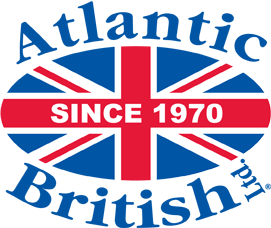Check out the rest of our History of Camel Trophy series:
Part 2: 1984-1986
Part 3: 1987-1989
Part 4: 1990-1992
Part 5: 1993-1995
Part 6: 1996-2000
Camel Trophy began in 1980, as a marketing gimmick from Camel cigarettes. The story doesn't actually begin with Land Rovers (and it won't end with them, either). It didn't even start as an international competition.
Camel Trophy 1980: Trans-Amazonica
Winners: Klaus Karttna-Dircks & Uwe Machel (West Germany)
Trucks: Ford U50 (locally-built Jeep CJ5s)

Camel Trophy 1980 was nothing near as organized as those events that would follow. It involved three German teams, piloting Ford U50s -- a license-built Jeep made locally in Brazil. The story goes that they were rented from the local Hertz outlet in Belem, though that may be an apocryphal story.
The teams set off from Belem near the Brazilian coast, and over twelve days, travelled the jungles of the Amazon Rainforest to Santarem, an inland city on the Amazon River. They traced the Trans-Amazon Highway, a half-completed route mired as much in politics as it was in mud. Even today, it is not fully paved.
The journey was a gruelling twelve days, with the three tiny Jeeps slogging through mud, sand, heat, and humidity. Sometimes the jungle reclaimed the road, and they'd have to hack them away with machetes. Sometimes they'd hit bureaucratic roadblocks alongside the natural roadblocks, though at least a corrupt policeman could be persuaded with a few packs of cigarettes (presumably, Camels).
The six Germans made it to Santarem intact, though the Jeeps less so, with two of them badly worn out and one of them having actually burned down along the way. They returned home with the beginnings of a new event: a globetrotting international 4x4 competition, which would become known as the "Olympics of Four-Wheel-Drive."
Camel Trophy 1981: Sumatra
Winners: Christian Swoboda & Knuth Mentel (West Germany)
Trucks: Range Rover Classic 2-door V8

Following on the unexpected success of Camel Trophy 1980, the event was expanded in its second year. It still featured only West German teams, but now there were five teams of two -- eight men and two women overall. After the battering the Jeeps took in Brazil, the organizers turned to find a more suitable manufacturer -- and if the story was true, not use rental cars. They found their partner in Land Rover, who supplied them with brand-new two-door Range Rovers, all with the V8 power to slog through mud with great abandon. It was the beginning of a beautiful partnership.
This year, Camel Trophy headed to Sumatra, the island of Indonesia across the Straits of Malacca from Malaysia and Singapore. They began the 1,000-mile southward trek in the village of Berastagi in North Sumatra. Almost immediately, the convoy was held up by bureaucracy, with the only solution after hours of holdup was an economic contribution from the Camel Trophy to the regional government.
The event was marked by extreme heat, sloppy mud, massive river crossings, makeshift bridges, huge quagmires, and lots and lots of mosquitoes. At one point they had to rescue a bus stuck in the mud, using three Rangies tied to it.
The expedition ended in the town of Jambi, in the south of Sumatra. It had been a long, hard slog through the jungle, but it had also been an epic event. The seed was hatched...far from being just a German marketing event, Camel Trophy seemed to have potential as an international competition. The Olympics of Four-Wheel-Drive were hatched.
Camel Trophy 1982: Papua New Guinea
Winners: Cesare Geraudo & Giuliaro Giongol (Italy)
Trucks: Range Rover Classic 2-door V8

1982 brought the first international Camel Trophy, with the West Germans joined by Dutch, Italian, and American teams. The teams numbered eight in total -- two from each nation. The target this year was Papua New Guinea, an island nation north of Australia that has some of the world's most remote tribes, their culture almost entirely untouched by the rest of the world. It was a new venture for Camel Trophy, with new guidelines in place like "keep driving if you hit a pig; the locals value them so much that they will kill you in vindication."
The journey began in Mount Hagen, a mining settlement in the middle of the country, and proceeded through the highlands of the country. The common themes of Camel Trophy continued: mud, makeshift bridges, mud, raging river crossings, mud, quicksand, and mud. It was punctuated with encounters with the locals, whose varied and pure culture led to many confusing, fascinating encounters. Perhaps the most famous of these was with the Mud Men, who wore enormous masks of dried mud. The oral history states that their ancestors had been defeated in battle, and had fled into the Asaro River to hide. They didn't try and escape until dusk, at which point they had become covered in dried mud from the river bottom. They came out of the river looking like spirits, of which the enemy was terrified and fled from. (Anthropological research in the 1990s found that it's likely the tradition was invented in the 1950s for the benefit of tourists, but never let that get in the way of a good story.) The image of the Mud Men on top of one of the Range Rovers defines Camel Trophy 1982, and indeed the event overall.
After 650 miles of jungle slog, the event ended in the coastal town of Madang. The Italians won the first international Camel Trophy, with the Germans runners-up and the Americans third. The die had been cast: this was to be a great, globetrotting international endeavour.
Camel Trophy 1983: Zaire
Winners: Henk Bont & Franz Heij (Holland)
Trucks: Land Rover Series III 88" (competitors), Land Rover Series III 109" (support)

By 1983, the Camel Trophy was a going concern. The partnership with Land Rover was thriving after two years, the event had become fully international, and it had spanned the globe in pursuit of adventure. The next edition would take the event to the continent that seems to define vehicle-based adventure, Africa.
This year, the Series Land Rover made its only appearance in Camel Trophy. The competitors drove 88" Series III station wagons, while the support crew used 109" wagons. All vehicles were powered by 2.25-liter diesels. The Series III was in its final year of full-scale manufacture in 1983, and it was a fitting farewell to the leaf-sprung Land Rover. The trucks were equipped with hot climate equipment packs, which included an 8-blade fan, double fan belts, an oil cooler, and fan shrouds. They also had the whole adventure kit, from roof rack to winch to auxiliary lights to jerry cans.
The journey began in Kinshasa, the capital of the country, and transitted most of the country to Kisangani in the northeast. It may have been the most grueling Camel Trophy so far, as the incredibly poor road conditions in Zaire, run by the dictator Mobutu Sese Seko, meant that the Series IIIs spent a significant amount of time either approaching or exceeding their tipping point.
Infrastructure was broken in the country overall, and at one point, the convoy's diesel cache was running low. They'd set a refueling point, but when they got there, they found that the fuel truck had gotten stuck in the jungle fourteen miles away. Several teams spent all night relaying the fuel back to camp. They also had to clear an overgrown runway for a supply plane to land. The greatest trauma to the event was the loss of one of the support 109" trucks, when an Italian journalist set it on fire by tipping over an oil stove; the conflagration spread to the jerry cans, and the truck died in an epic fireball. Shockingly, even after all of the aluminium melted off the body, the engine still started!
The Camel Trophy matured on the humanitarian front, as well. The team doctor, who had previously focused only on the participants, began to hold clinics in the villages they visited. This spirit of giving back to hosts would become more and more a component of Camel Trophy as the event continued.
The sixteen-day, 1,000-mile drive was through truly hellacious climate. Temperatures were in the high 70s in the shade, approaching 120 Fahrenheit in the hottest sun. Humidity ran at 95% or higher, combining with the heat to make a suffocating environment. The conditions weakened the team members, already worn from battling the battered tracks.
Camel Trophy 1983 arrived at the finish line in Kisangani intact (excluding the burnt-out 109"), a testament once again to the durability of the Land Rovers. The Dutch team of Henk Bont and Franz Heij emerged as victors, in what was now a seven-nation army of off-roaders.
***
These earliest years of Camel Trophy were the beginnings of the massive international event it would become. From a small German event with three rental Jeeps driving across Brazil, it grew into a truly international event spanning the world in just four years. Land Rover showed the durability of their vehicles, both Range Rover and Series III, in some of the world's most challenging terrain. The marketing opportunity for both Land Rover and Camel cigarettes was massive, likely much bigger than either expected. From the iconic Camel Trophy shield based on the cigarette logo to the Sandglow paint color, taken from the Rover paint catalog, there had become a cohesive brand and image around the entire event. The rest of the 1980s, which we'll cover in Part 2 soon, would see Camel Trophy come of age with the advent of the Defender and the glory days of hardcore adventure.
Sources
The Camel Trophy Club, https://sites.google.com/view/cameltrophyclub/
Robert Comstock's memories of Camel Trophy 1982, https://robertcomstock.com/pages/history#newguinea






















